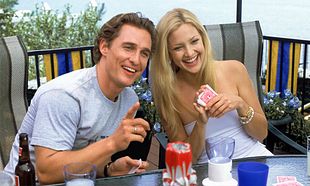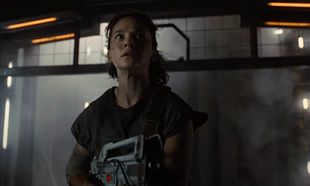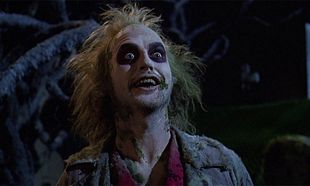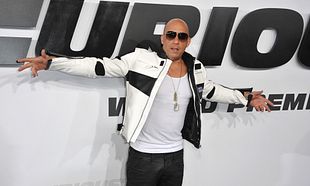Horror can be hard to classify as a genre.
What one could consider a supernatural drama, others might consider a straight horror. Others may be seen as a psychological thriller instead of being a horror. As a genre, horror suffers from being unfairly maligned because of its lesser entries. Yet, its history is rich with success and its greatest achievements are considered some of the greatest films ever made.
With that in mind, here's ten horror movies - as we see them, anyway - that you need to see before you die.
10. NOSFERATU (1922)
Although the more pedantic readers will know that Nosferatu is not the first horror film ever made, it's certainly the most recognisable of its era. A masterpiece of German expressionism, Nosferatu has the distinct honour of giving birth to the genre as we know it. Yet, it was so close to being a lost film. After the estate of Bram Stoker ordered all copies of it destroyed following a plagiarism lawsuit – director F.W. Murnau didn't get permission to use characters from the novel – the film was considered lost. That is, until, a copy that was hidden away came to light. Now the film's freely available on YouTube. Think about that for a moment.
9. KILL LIST (2012)
Ben Wheatley's tale of two hitmen starts off with a fairly drab premise, but escalates into a sinister tale of death, family and nightmares. The director has become one of the most promising filmmakers to come out of the UK and last year's A Field In England was something to behold. Where that had stately beauty and black humour, Kill List is a roughly-made, darkly intimate chiller that takes more than a few cues from the British classic The Wicker Man. Shot over 18 days and with a minimal script, the film blossomed from a straightforward crime drama into one of British cinema's most disturbing films. Not to be watched alone.
8. SUSPIRIA (1978)
Dario Argento's work can be categorised by one word – violent. Very, very violent. Suspiria features a grotesque amount of blood and gore, but it also meshes these elements with incredible visuals and a keen eye for design and art. A beautiful young ballerina arrives at a prestigious school where, as the film emerges, is home to a coven of witches. The director specifically chose camera fliters and set designs that made the protagonist seem much smaller than her surroundings. Combing unsettling visuals, gleeful violence and an ominous psychedelic rock soundtrack and you have one of the crowning achievements in Italian horror.
7. RINGU (1998)
Although Ringu may have spawned several bland attempts by American filmmakers to cash in on the K and J-Horror craze of the late 90's, it still stands up in spite of what it birthed. Even the premise of the film is inspired. A cursed videotape finds its way into the hands of a journalist who sets out to investigate its origins. It's more interesting, however, why the writer / director chose a videotape to be the villain. Was it saying something about the home rental market, maybe? Or did it really not like VHS? We're not sure, but regardless, Ringu is a perfect example of the supernatural meeting the mundane. That video still freaks us out.
6. ROSEMARY'S BABY (1968)
Like Ringu, Rosemary's Baby is another meshing of the supernatural and the mundane. A young couple move into a dilapidated apartment block. The couple, a housewife and an actor, are struggling to make ends meet and Rosemary (Mia Farrow) becomes more and more convinced that something sinister is at work. Keep in mind, that in 1968, there was no such thing as pro-choice. Indeed, in film, the feminine body was closely associated – and still is – with the maternal body. So the idea that a woman could potentially be carrying the spawn of Satan completely subverted everything known until that point.
5. DAWN OF THE DEAD (1978)
“They just remember. Remember they wanna be in here.” Like the best in science-fiction, horror works when it's an allegory. Its prequel, Night of the Living Dead, showed a society that was slowly fading, shambling towards its fate. With Dawn of the Dead, it is doomed and the survivors are living in the ruins. The image of banding together to live in a supermarket and, for a moment, enjoying their spoils is well-noted. Dawn of the Dead's popularity with audiences in 1978 effectively launched the zombie genre. Without it, there'd be no Walking Dead, no World War Z, no nothing.
4. THE THING (1982)
Based on a B-Movie classic, John Carpenter's take on the enemy within – be it Communism, McCarthyism, whatever – is his finest work. Granted, he worked successfully in the genre with the likes of Hallowe'en, and to some extent, Assault on Precinct 13, The Thing stands as his greatest achievement. A group of scientists, stationed in Antarctica, happen up on a crater that houses an alien lifeform. There's one catch – the lifeform assums the identity of whatever it comes into contact. As ambitious as any film Carpenter has made, The Thing serves as a reminder that some films are not of their time. It was originally lambasted by critics and barely made its budget back. It's now considered a classic of the genre and has one of the finest loglines we've ever seen - “Man is the warmest place to hide.”
3. ALIEN (1979)
Alien is a strange beast. Is it horror? Or is it science-fiction? Or is it both? It featured in our 10 Sci-Fi films and, of course, we have to have it here. What makes Alien such an effective horror is that it works within the tropes and cliches of the genre without it seeming like it's mocking them. Ridley Scott's intense direction – he famously didn't tell the actors that John Hurt's chest would burst open with blood and gave one actor a panic attack – and a gripping story that takes in feminism, corporate responsibility and eugenics, Alien is the touchstone for sci-fi horror. HR Giger's groundbreaking design and a mature cast of Sigourney Weaver, Tom Skerritt and Ian Holm puts Alien on another platform entirely. All that came after are invariably compared to it and rarely, if ever, equal it – except for Aliens, obviously.
2. THE EXORCIST (1973)
William Friedkin was, at this point, known only for The French Connection. A young, brash and energetic director at the time, his use of unconventional methods to elicit the reactions he wanted from his cast are now legendary. He fired guns, slapped people and almost broke one cast member's back trying to get the right sense of horror, fear and anguish. It's all there when you watch it, and, we have to admit, we've never looked at processed peas the same way.
1. THE SHINING (1980)
Stanley Kubrick famously attempted to get a film off the ground that dealt with the genocide of Native Americans. Naturally, all major studios refused. He then moved on to the Holocaust. Again, same thing. So, when he was offered an adaptation of a popular Stephen King novel, Kubrick worked that research and knowledge into the film. How, you may ask? The typewriter that Jack Nicholson's character uses is a German Adler typewriter – the same used by the Nazis. What was the Overlook Hotel built over? A Native American burial ground. In fact, we'd highly recommend you watch the documentary Room 237. It brilliantly dissects and analyses Kubrick's use of subliminal messages throughout the film. For example, did you know that the hotel's layout is completely implausible? There's tons of that sort of stuff in the documentary. As for the film itself, The Shining is a work of art from a director and cast at the height of their powers. Jack Nicholson's cartoonish humour blends with the nail-biting tension as we see him go slowly insane.
HONOURABLE MENTIONS
[REC] (2007)
The Wicker Man (1973)
Masque Of The Red Death (1964)
Hallowe'en (1978)









































































